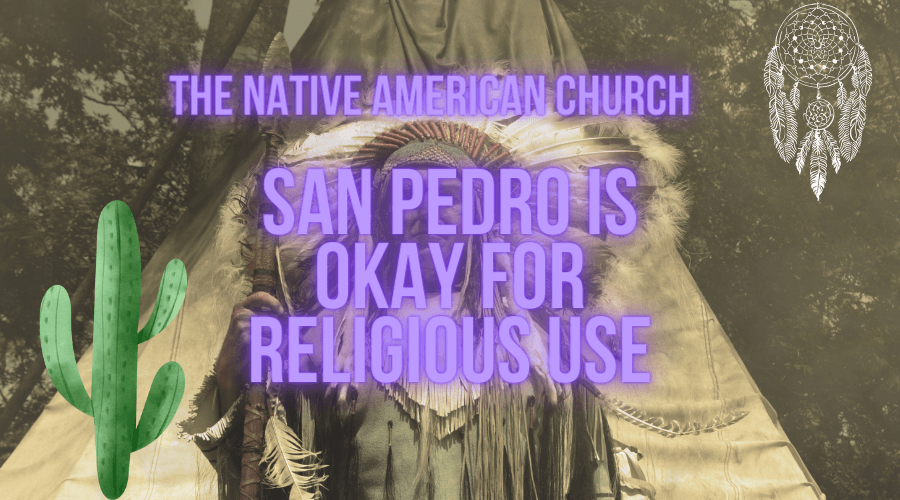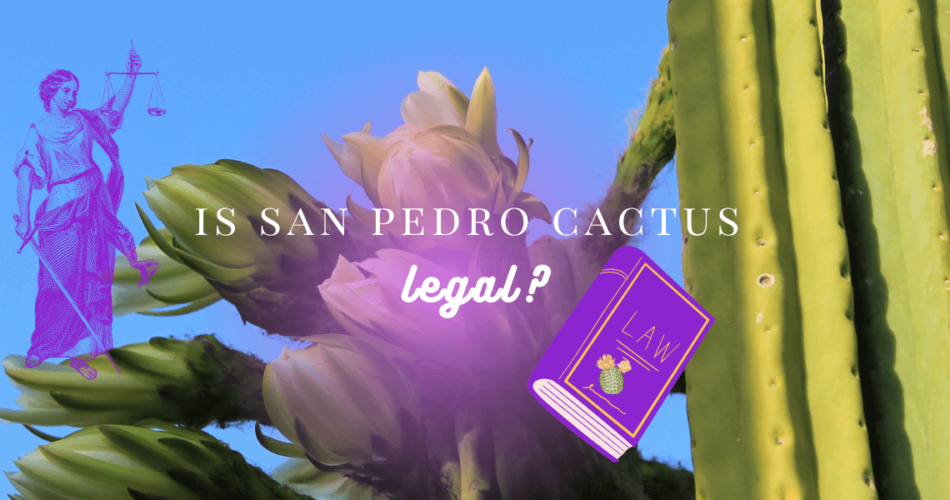Things to remember!
- The San Pedro cactus (and Peruvian Torch cactus), containing psychedelic mescaline, is legal to grow in the U.S. 🌵✨
- Peyote, another mescaline-containing cactus, is less fortunate. 🌵✨
- The use of San Pedro for religious purposes holds legal status. 🌵✨
- Mescaline is a Schedule I drug, making its use controversial. 🌵✨
- Using San Pedro as plant medicine walks a fine line between legality and prohibition. 🌵✨
Are Psychedelic Cacti Illegal?
Native to North America are the peyote, San Pedro, and Peruvian Torch cacti. Known for their psychoactive alkaloid, mescaline, these hallucinogenic desert dwellers have a murky legal status. While they grow naturally in the American Southwest, federal laws deem them illegal due to their potent (psychedelic) effects. Yet, there’s an exception: the Native American Church has legal rights to use some cacti for traditional spiritual ceremonies.

Why Is Mescaline a Schedule I Drug?
Ah, mescaline. The superstar in both Peyote and San Pedro. So why, oh why, is it listed as a Schedule I drug? It’s a head-scratcher. This classification is kind of like the ‘naughty step’ for substances seen as high-risk with no acknowledged medical use. But hold up! Consuming San Pedro cacti isn’t all forbidden.
It’s been used as medicine or in religious ceremonies for hundreds of years by native tribes of South America. The U.S. law recognizes that, and so some cacti containing mescaline (including San Pedro) are legal for ceremonial use.
Fun Fact 🌵
San Pedro can live to be 100 years old and reach a sky-high height of 20 feet! I guess it really does bring you closer to the heavens!
How Is San Pedro Cactus Legal to Grow?
And now to our main query: “Is San Pedro cactus legal?” Yes, it’s legal to grow! This Andean native plant adorns many gardens across the U.S. as an ornamental addition. But authorities face a prickly problem: how to differentiate between innocent horticulture and drug harvest? Typically, it’s down to intent. A cactus in your yard? Totally fine. Preparing it for psychedelic use? Well, that’s where you might face issues.
The Extra Mile: Can You Travel With San Pedro?
Quick detour before our next headline. Ever thought about taking your San Pedro on a road trip? Be warned, crossing state lines with this prickly pal can get you into a sticky situation. Despite its legality in cultivation, transportation laws can vary widely from state to state. Always do your homework!
Is It Legal to Use San Pedro as Plant Medicine?
This is a gray area. San Pedro has been used to treat various ailments in its native regions of Peru, Ecuador, and Bolivia for centuries. But in the U.S., while the cactus itself is legal to possess, mescaline extraction and consumption can land you in hot water. So, San Pedro tea, a common use in San Pedro ceremonies, may raise some legal eyebrows.
The Legality of San Pedro Cactus for Religious Purposes
So, is San Pedro cactus legal for religious use? Actually, yes! Just like the peyote, San Pedro has VIP access under the Religious Freedom Restoration Act. This protects the Native American Church and its members, and allows them to continue their practices.
So, my fellow cactus cronies, the answer to our burning question, “Is San Pedro cactus legal?” is a classic ‘it’s complicated’. But hey, isn’t that just like life? We hope you remember the most important parts: cultivation=legal, non-religious use=illegal.
Until we meet again on the sandy trails of cacti curiosities, stay prickled, stay respectful, and keep those questions coming. After all, who doesn’t love a good cactus conundrum?
Similar Posts:
- Is Peyote Legal? Can You Cultivate It? | The Legal Status of Peyote
- The Marvel of Echinopsis Peruviana: Meet the Peruvian Torch Cactus, San Pedro and Peyote’s Mescaline Cactus Cousin
- San Pedro Cactus (Echinopsis Pachanoi) 🌵 All You Need to Know
- Mescaline vs Peyote Cactus: A Short Comparison
- How Much Is Peyote Worth? Cactus Controversial?
- Mescaline vs. LSD – Let’s Compare These Popular Hallucinogens
- San Pedro Cactus Psychedelic Effects. What You Need to Know

